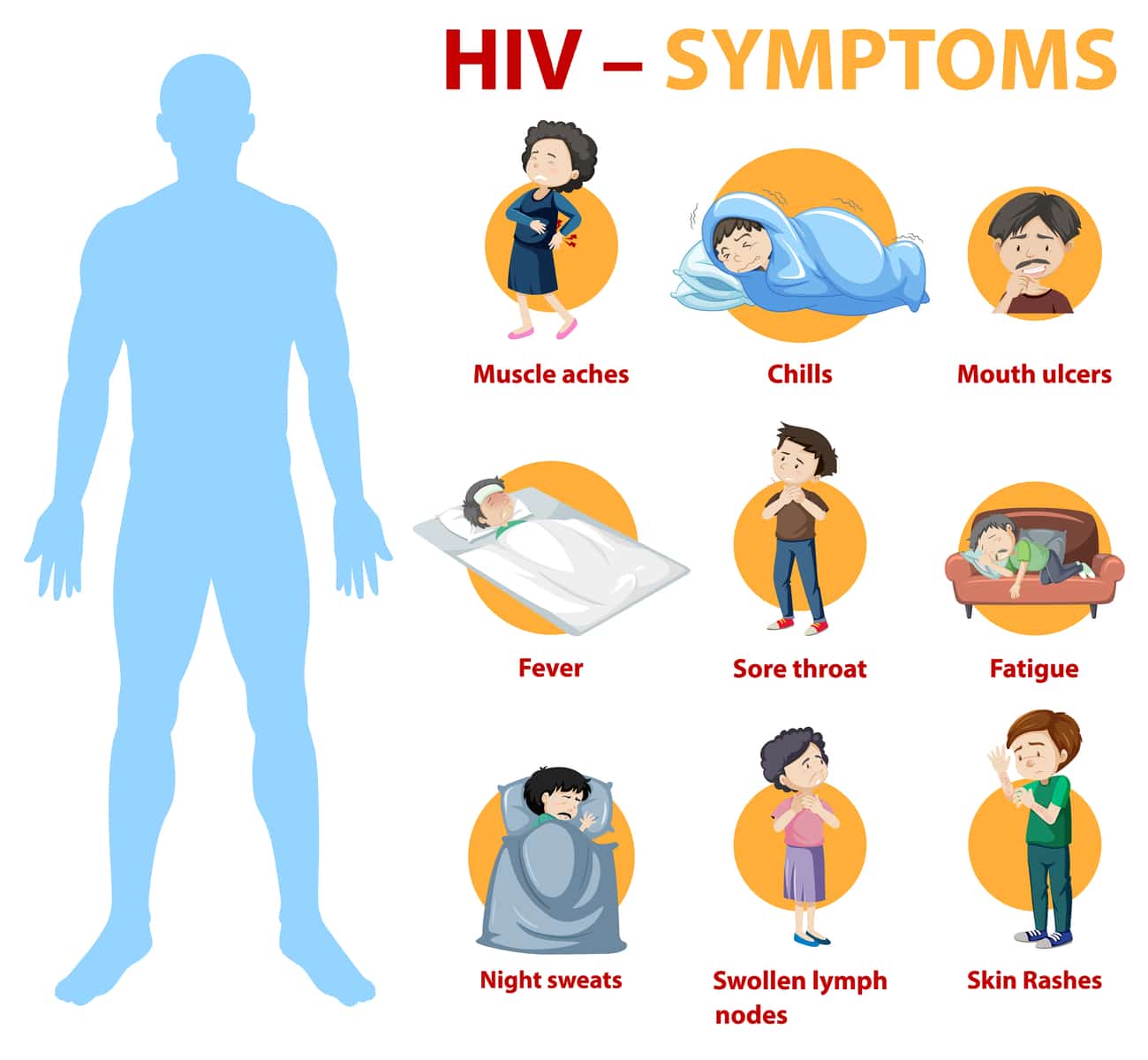Signs and symptoms

The signs and symptoms of HIV infection are highly variable and depend on the stage of the disease. In the initial phase, there is a prodromal syndrome, and it can be totally asymptomatic. But some patients experience symptoms in this stage a few weeks after being infected. These symptoms are unspecific and similar to those experienced in influenza, including:
- Headache: This is a common symptom closely after being infected, but it is usually a very mild headache and improves after using over-the-counter anti-inflammatory drugs.
- Mild fever: Fever is the immune system’s initial response trying to fight the infection, but it is very mild and self-limited at first. Since HIV replicates inside of the cell, the immune system can’t reach the virus, and it goes unnoticed during the latency period.
- Sore throat: It is a likely symptom closely after being infected, but the soreness is usually not severe and goes unnoticed. The symptoms are unspecific if any, and it is difficult to trace the source of the infection.
- Skin rash: Some patients experience a skin rash, which is usually a physical sign that the immune system was temporarily activated. The rash in this initial stage is unspecific and does not follow a traceable pattern.
- Fever: In this initial stage, it would be mild fever easily controlled by over-the-counter drugs and often goes unnoticed. It could be accompanied by malaise and a sensation of being sick that is common in influenza infections.
As the disease progresses, it starts affecting the immune system, and patients start developing certain signs and symptoms. For example:
